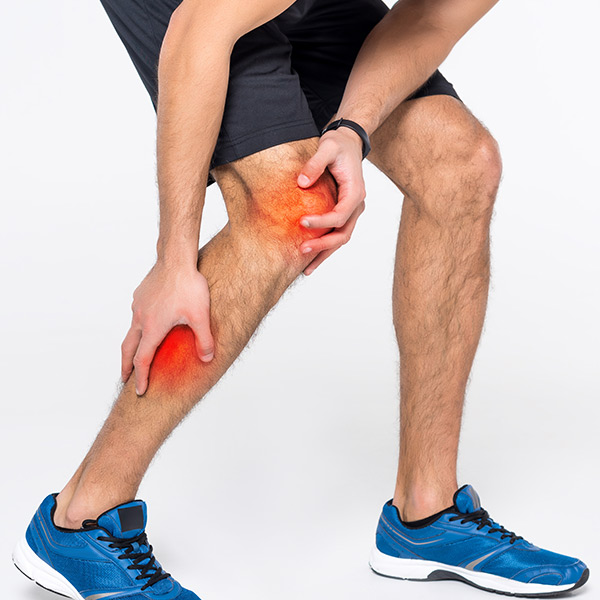




If you suffer from leg pain, "twitching", or muscle cramps anywhere in your body (including your feet), the chances are excellent that you have a magnesium deficiency.
This is a bigger problem than it may sound like. Magnesium deficiency, known in medical terms as hypomagnesemia, is a seriously overlooked health problem.
It's estimated that 78% of all adults are not getting the recommended intake of magnesium! Plus, it's often undiagnosed because symptoms don't typically appear until you become severely deficient.
Health problems associated with low magnesium include:
— Diabetes
— Celiac Disease
— Digestive issues like poor absorption and chronic diarrhea
— Inflammation and swelling
— Muscle pain and cramps
This is quite an eye-opening list, especially since an unhealthy gut and inflammation are responsible for virtually every illness we experience.
See, magnesium is a mineral that has multiple benefits.
— First of all, it blocks the effects caused by too much calcium. (Effects like kidney stones, constipation, abnormal heart rhythms, bone pain, depression, memory loss, and those muscle cramps we're talking about.)
— Magnesium also increases your body's ability to absorb potassium, which is critical for healthy muscle function. Magnesium blocks your pain receptors, relaxes blood vessels, decreases blood pressure, and restores healthy circulation.
— Finally, magnesium increases your serotonin, GABA, and melatonin—all the factors that help your muscles relax and help you sleep.
So, how can you fix a magnesium deficiency?
It's almost as simple as adding a magnesium supplement… but there is a bit more to it than that.
The recommended dietary allowance for adult men is 420 mg per day and for women, it is 320 mg per day. So first, let's look at ways we can absorb more magnesium:
Try food supplements.
Note, however, that all magnesium supplements are not created equally. And while any type of magnesium may be better than no magnesium, we're looking for what's best for your deficiency and muscle cramps.
That being said, when choosing a nutritional supplement, choose magnesium citrate. Take it throughout the day, and always with food.
Use transdermal magnesium.
You might also consider a topical form of magnesium that is absorbed through your skin and comes in oils, lotions, and creams. Topical applications have proven to be more effective than oral supplements for delivering magnesium to the body.
Soak in a warm Epsom salt bath a couple of times a week.
Epsom salt is pure magnesium sulfate, so adding about 1 ½ cups of Epsom salt to a large tub of water and soaking for 20 minutes can help you absorb magnesium, reduce stress, minimize pain and swelling, and promote better sleep.
Eat magnesium-rich foods.
Magnesium is one nutrient that is easy to obtain from food—if you're eating the right things. Your best bets are pumpkin seeds, almonds, cashews and peanuts. Soymilk and edamame are also high in magnesium but beware of phytoestrogen in soy products. Black beans, avocado, and whole grains are also magnesium-rich.
I recommend doing an internet search for "foods high in magnesium" and incorporating more of these into your daily diet.
Once you start to increase your magnesium, you will notice a difference in how you feel. Those "twitches" and leg cramps will go away. You will start falling asleep faster and resting better. And, if you've been seriously deficient, you may even notice better digestion, less inflammation, and overall improved energy and well-being.
Do yourself a favor, and make sure your body is getting the magnesium it needs for good health!